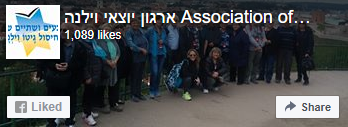Cultural Life
Vilna excelled in its diverse and comprehensive cultural activities. Isaiah Trunk noted in his monumental research of the Judenrat: “The reader …. on the cultural activities in the Vilna Ghetto, is often tempted not to believe that, similar to when life was normal, such diverse activities had taken place in the Vilna Ghetto, where the last vestiges of the community who lived in fear of annihilation was concentrated”.
This exceptional activity which was undoubtedly impacted by the city’s glorious cultural-scholarly tradition, contributed a great deal to the rise of the morale of the ghetto Jews, and was an expression of their coping with the terrible Nazi murders and policies.
The ghetto enjoyed a rich and varied cultural life with children and their education being paramount. Immediately following the confinement of the Vilna Jews in the ghetto, the first schools were opened. Lessons were often interrupted because of the Aktions but were renewed at the end of November. A kindergarten was set up for those children whose parents worked outside of the ghetto. At various times, about 700 – 900 children aged 5 – 12 studied at the elementary schools. 120 students studied at an elementary school which had been established at the Kailis Camp. There was also a high school in the ghetto with four classes and about 100 students. A teachers’ association was formed with approximately 100 members. The association held lectures on education as well as general topics. A short while after the ghetto had been established, two schools were founded. This was done at the initiative of the teachers and the support of the Judenrat. In November 1942, a third school was added. Following a period of Aktions, the number of students evened out to about 1,500. There were also two kindergartens and a high school with about 100 students. Professional courses were provided for the boys and girls and graduates even received Scheins. There was also a music school with about 100 students.
Celebrations and ceremonies relating to various Jewish holidays and historical-literary events were held at the schools. The relationship between teachers and students was very close and emotional, and activities were very intense. Herman Kruk mentions in his diary that, on 8th March 1942, after attending two rallies: “Life bursts forth from within the cloak of Ponar, striving for a better tomorrow… today was like a small Yom Kippur for me. I could not control myself and the tears flowed as if from a spring… a hall full of people crying … it is difficult to say what it means to cry in the Vilna Ghetto”.
A youth club was established in the ghetto for 16 – 18-year-olds, as well as a children’s club, which provided diverse and amazing group activity, such as law and history, drama, literary lectures etc. Yitzhak Rudashevski expresses this enthusiastically in his diary on 9th January 1943: “This evening, there was a big celebration at the club … our dramatic circle showed its resources and ability until midnight …our spirit, which we carry proudly within the walls of the ghetto, will be the most beautiful gift for a shining future. Long Live the Light! Progress for our People”.
The Judenrat paid attention to the care of children, orphans and children in distress, and set up a boarding school for boys, one for girls, an orphanage for preschoolers and a day-care center for children whose parents worked outside the ghetto. The school curriculums were eventually formulated following differences of opinion and, in addition to Yiddish and general subjects, included Hebrew, the Bible and subjects of the Land of Israel.
Sport and Chess:
Competitions and championships were held between teams from the ghetto and also from the Kailis labor camp.
The most common disciplines were athletics (running, jumping and even marathons), volley ball, football, table-tennis, gymnastics and rhythmics. In July 1942, a sports field was laid. There were between 400 – 1,200 people engaged in sports one way or another, besides the participating of school children.
Chess was also widely played, including championships and the presenting of awards.
Cultural Events:
A wide variety of activities were held on the stage, in schools, boarding schools and at rallies etc. Jewish festivals were widely celebrated, as well as secular holidays such as the 1st May, the New Year and Tu B’Shvat. Celebrations were held in schools under the slogan “Greetings from the children of the ghetto to the children in Eretz Israel” on Tu B’Shvat in January 1943!
There were also study evenings held by the Writers and Artists Organization, as well as literary competitions with prizes being awarded. Among the winners were the poet Avraham Sutzkever, the writer Herman Kruk and the poet and composer Hirsch Glik. Art exhibitions and prize-winning competitions were held in which the rare painting talent of Shmuel Bak, an 11-year-old boy, was discovered. Shmuel went on to become a world famous painter.
From: Shani Amargi and Nohar Oded, Yosef Weissman- last descendant
Further reading: National Library's Blog

